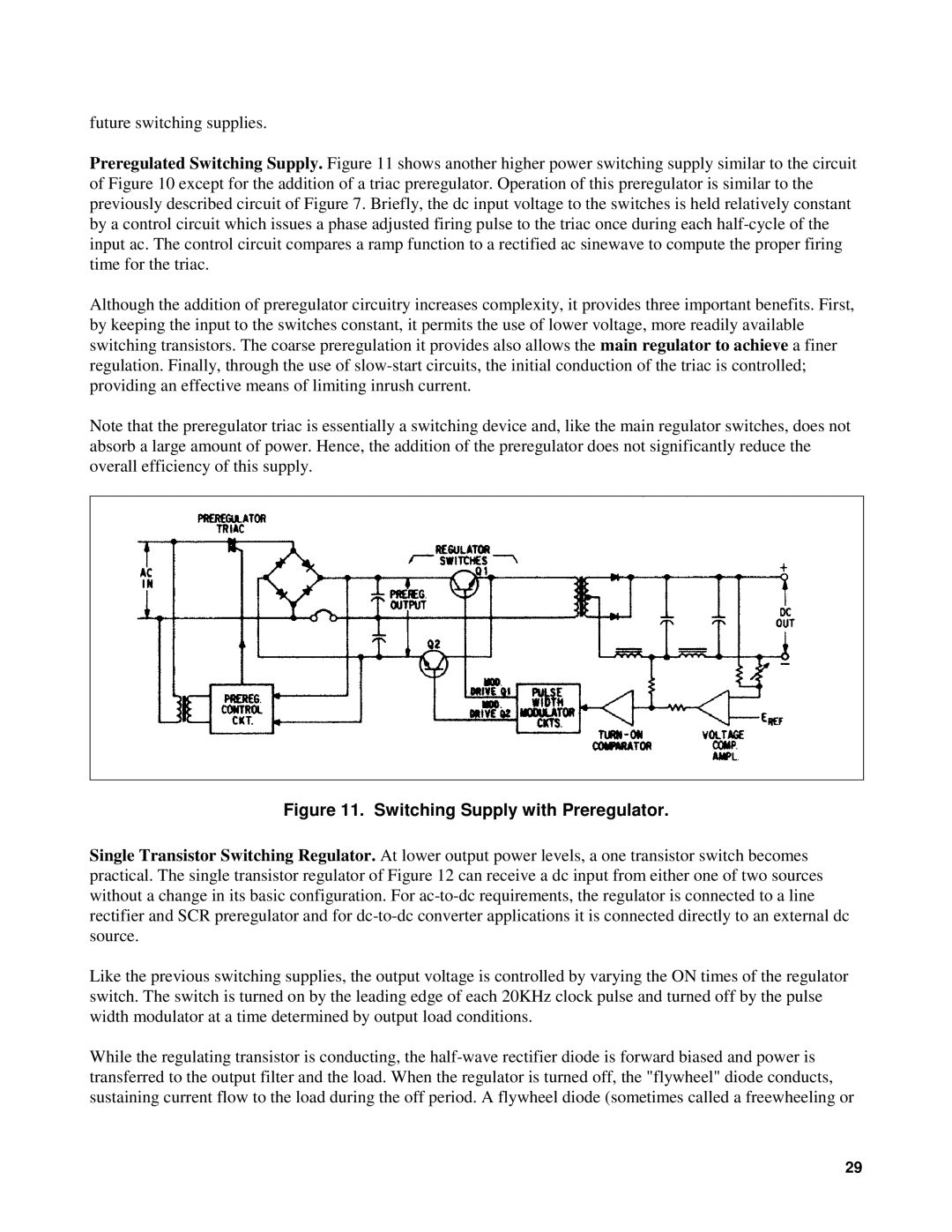
future switching supplies.
Preregulated Switching Supply. Figure 11 shows another higher power switching supply similar to the circuit of Figure 10 except for the addition of a triac preregulator. Operation of this preregulator is similar to the previously described circuit of Figure 7. Briefly, the dc input voltage to the switches is held relatively constant by a control circuit which issues a phase adjusted firing pulse to the triac once during each
Although the addition of preregulator circuitry increases complexity, it provides three important benefits. First, by keeping the input to the switches constant, it permits the use of lower voltage, more readily available switching transistors. The coarse preregulation it provides also allows the main regulator to achieve a finer regulation. Finally, through the use of
Note that the preregulator triac is essentially a switching device and, like the main regulator switches, does not absorb a large amount of power. Hence, the addition of the preregulator does not significantly reduce the overall efficiency of this supply.
Figure 11. Switching Supply with Preregulator.
Single Transistor Switching Regulator. At lower output power levels, a one transistor switch becomes practical. The single transistor regulator of Figure 12 can receive a dc input from either one of two sources without a change in its basic configuration. For
Like the previous switching supplies, the output voltage is controlled by varying the ON times of the regulator switch. The switch is turned on by the leading edge of each 20KHz clock pulse and turned off by the pulse width modulator at a time determined by output load conditions.
While the regulating transistor is conducting, the
29
